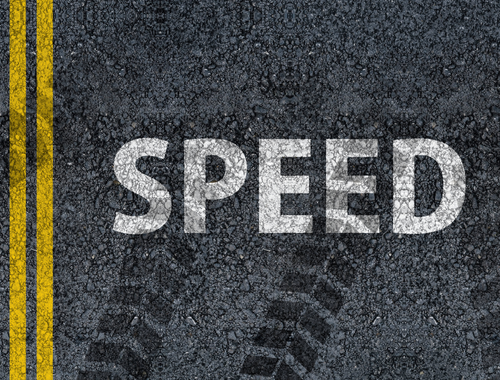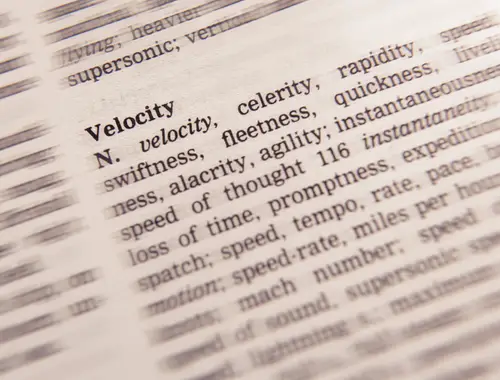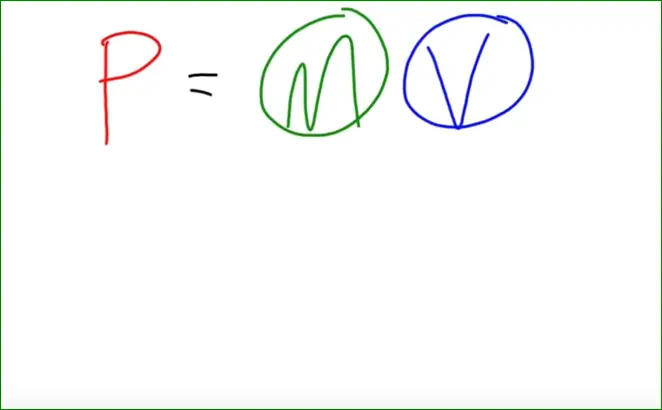Have you ever questioned why certain things can cover the same distance at various times? It occurs as a result of the different speeds of various items. For example, a moving body gradually shifts positions as it moves. Two physical quantities are employed interchangeably to calculate the rate of such change.
By calculating the distance an object travels in a predetermined amount of time or speed, you can determine the rate of motion of a body. Because “speed” and “velocity” have comparable applications, they are frequently used interchangeably. These two, however, are completely different physics ideas of motion.
Velocity measures the distance an object travels concerning its direction. Understanding the distinction between Speed and Velocity is critical as these ideas revolve around measurements of a body’s motion.
Speed is a scalar quantity because distance (and time) are both scalar quantities. In contrast, velocity and displacement are vector quantity since it has a defined direction and magnitude. Here, we’ll take a quick look at both.

Speed and Its Types
By “speed,” we mean the distance an object goes in a predetermined amount of time. It is a scalar quantity because to specify it, and we only need to know its magnitude, not its direction. It can be considered the speed at which a body covers a certain distance in a given time. It establishes the object’s speed or how quickly an object is moving. The SI unit for speed is the meter per second. The kilometer per hour, however, is the most often used unit of speed.
A traveling object with a high speed travels a long distance faster than an object moving slowly, which travels a little distance in the same length of time. An object’s speed is 0 when it is not moving at all. You may determine an object’s speed by using the following formula:
Average speed can be calculated as: Total Distance Traveled/Time Spent.
There are two main types of Speed, Uniform Speed, and Non-uniform Speed.
Uniform speed can be defined as A body’s speed being uniform when its distance traveled is equal and spaced out equally across time.
Non-uniform speed happens when a body travels different distances in the same amount of time.

Velocity and Its Types
The speed of an object moving in a specific direction is called velocity. It is a vector measurement since it includes both the magnitude and direction components. To fully understand velocity, it is important to remember that the direction of the item must be indicated while measuring its velocity.
The displacement of an object relative to the point of reference, or the rate at which its position changes for a moving body, is known as its velocity. To comprehend this, If a car moves quickly and then returns to its starting position, the velocity will be 0 because the automobile returns to its starting location, and the motion did not result in a position change. Therefore, the car’s velocity will be zero in this situation.
It is just the rate at which an object moves in a certain direction. It can alter with a change in speed or direction, or perhaps both, and can be uniform or non-uniform.
Average velocity is calculated as Displacement / Time.
There are two types of Velocity, Constant Velocity and Changing Velocity.
Constant Velocity: Constant Velocity is the term used to describe a motion in a straight line that does not alter with direction or speed.
Changing velocity is defined as a velocity that modifies speed or direction. Another name for this is acceleration. When speed and direction change suddenly, the scenario is referred to as experiencing instantaneous velocity.
Similarities Between Speed and Velocity
Both Speed and Velocity have various capabilities, but they also have some things in common that are as follows.
Physical Quantities
The characteristic quality of a system that is typically characterized in terms of measurement is referred to as a physical quantity. As a result, we can represent a physical amount as the result of multiplying a numerical value by its unit in an algebraic manner.
Speed and velocity are physical quantities because we can measure and quantify them.
We examine a huge variety of events and things in physics. These range from the minute lifetime of an atomic nucleus to the age of the universe today, the size of an amoeba to that of the sun, the energy needed to lift a pen to the energy released after a nuclear reaction, where the large and small quantities can be related to one another in terms of millions of powers of 10.
Same Unit of Measurement
A unit of measurement is a specific magnitude of the quantity which can be used as a benchmark for measuring other quantities of the same kind and is specified and accepted by law or convention. Any other quantity can be stated as double the metric unit.
The SI unit for Velocity and Speed is the same—m/s. It is because these physical quantities also have the same dimension, that is, [L T-1].
Both Are Related to Moving Objects
In physics, motion is a function of a body’s position or orientation over time. The translation is defined as movement along a line or a curve. Rotation is a motion that modifies a body’s orientation. In all scenarios, the acceleration and directed speed of every point on the body are equal (time rate of change of velocity). Motion that involves both translation and rotation is the most generic type.
Speed and velocity refer to moving objects; they have no meaning when referring to static objects. Both could be uniform or non-uniform, which means that the following are possible: uniform Speed, uniform Velocity, non-uniform Speed, and non-uniform Velocity.
Applications in Real Life
When driving, the average speed is typically used to calculate the distance it will take between two sites. A speedometer displays a vehicle’s current speed.
Velocity determines how long a storm will take to reach the shore, how long it will take rockets to reach the moon, and other things.
Conclusion
While Velocity and Speed have some similarities, they also differ in some ways. For example, except when an object moves in a straight direction without making a U-turn, where the magnitude of the average velocity is equal to the average speed, the average velocity is always lower than the average speed. Additionally, when the direction of a moving body changes, so does its velocity.
FAQs
When are Speed and Velocity the Same?
Only when a body moves in a single straight line does its speed and velocity measure the same.
What are the Three Differences Between Speed and Velocity?
Velocity is the pace and direction of an object’s movement, whereas speed is the time rate at which the object travels along a path. In other words, velocity is a vector, whereas speed is a scalar value. In contrast to velocity, which can be negative or zero, speed cannot be either.
Which is Faster, Speed or Velocity?
Speed is the rate of movement. The speed with a direction is called velocity. A speed is defined as 9 km/h (kilometers per hour) for Ariel the Dog. However, stating that he runs 9 km/h westwards is a speed.
Why is Speed Bigger than Velocity?
Due to the fact that Displacement is never greater than or equal to the distance traveled. As a result, in general, speed is higher than the magnitude of velocity.
Velocity VS Speed Examples
A person moving at 30 kmph through a roundabout is considered speed. A woman intends to travel through East Mumbai in her automobile at a speed of 56 kmph is Velocity.












Leave a Reply